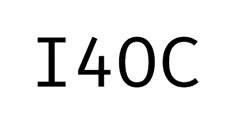Historiographic values in Cuban fiction cinema from 1960 to 1990
DOI:
https://doi.org/10.18050/esp.2014.v7i1.2592Keywords:
Cinema, History, Historical cinema, Fiction cinema, Cuban fiction cinemaAbstract
The triumph of the Cuban Revolution in 1959 was immediately followed, in an unprecedented social turmoil, by its process of radicalization. The first law of the cultural nature of the Cuban Revolution would be destined to the foundation of the Cuban Institute of the Art and Industry of Cinema (ICAIC) and created national cinematography of unquestionable aesthetic values and own identity. A relevant characteristic of Cuban cinema in general and of Cuban fiction cinema, in particular, is its vocation for history. In this article, the authors refer to the legitimacy of the use of cinematographic works as historical documents, set out their own methodology for determining the historical information contained in a work of cinematographic fiction, and outline the historiographic value of Cuban cinematographic fiction production between the 1960s and 1990s.
Downloads
Downloads
Published
How to Cite
Issue
Section
License

This work is licensed under a Creative Commons Attribution-NonCommercial 4.0 International License.


















